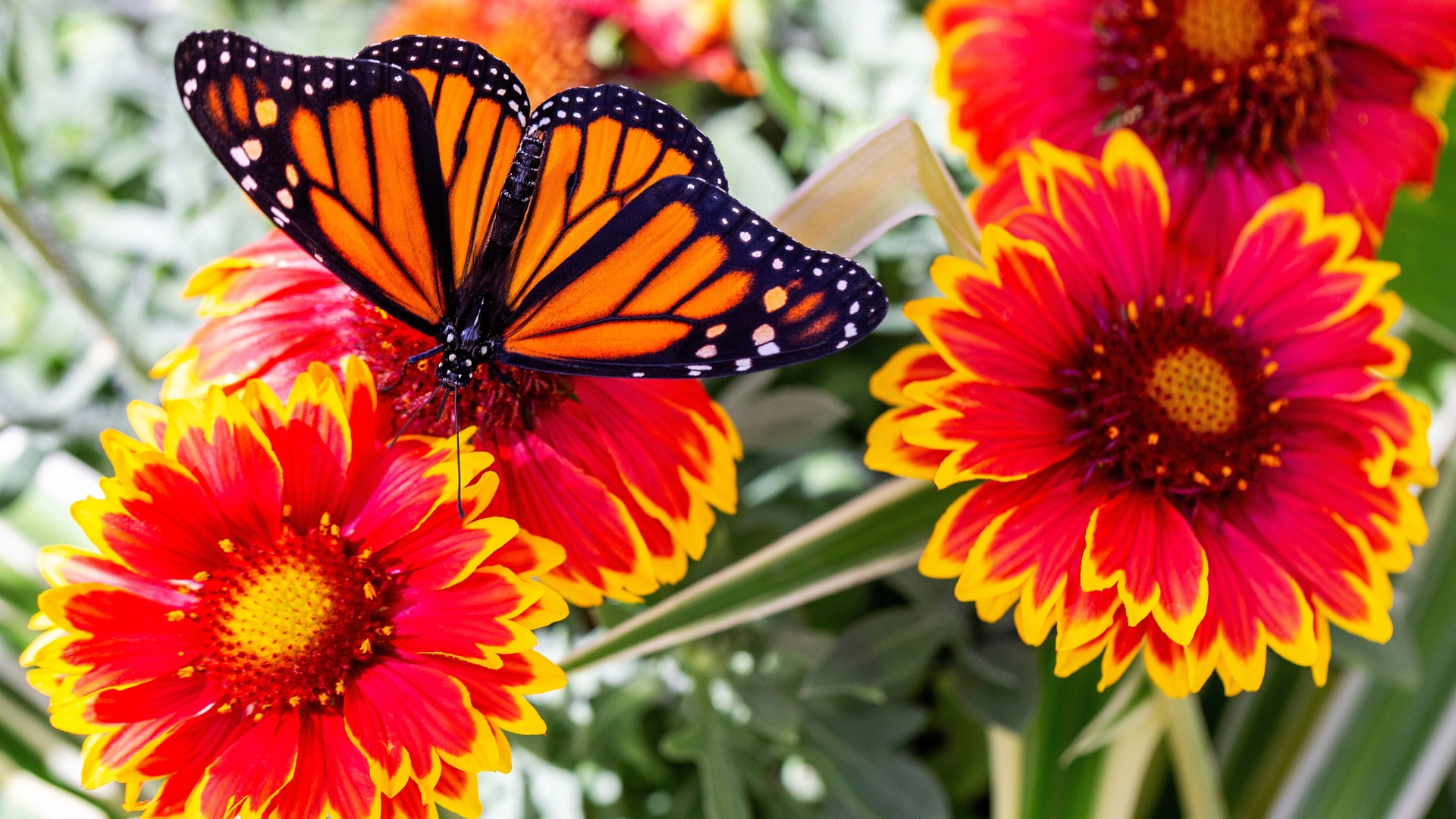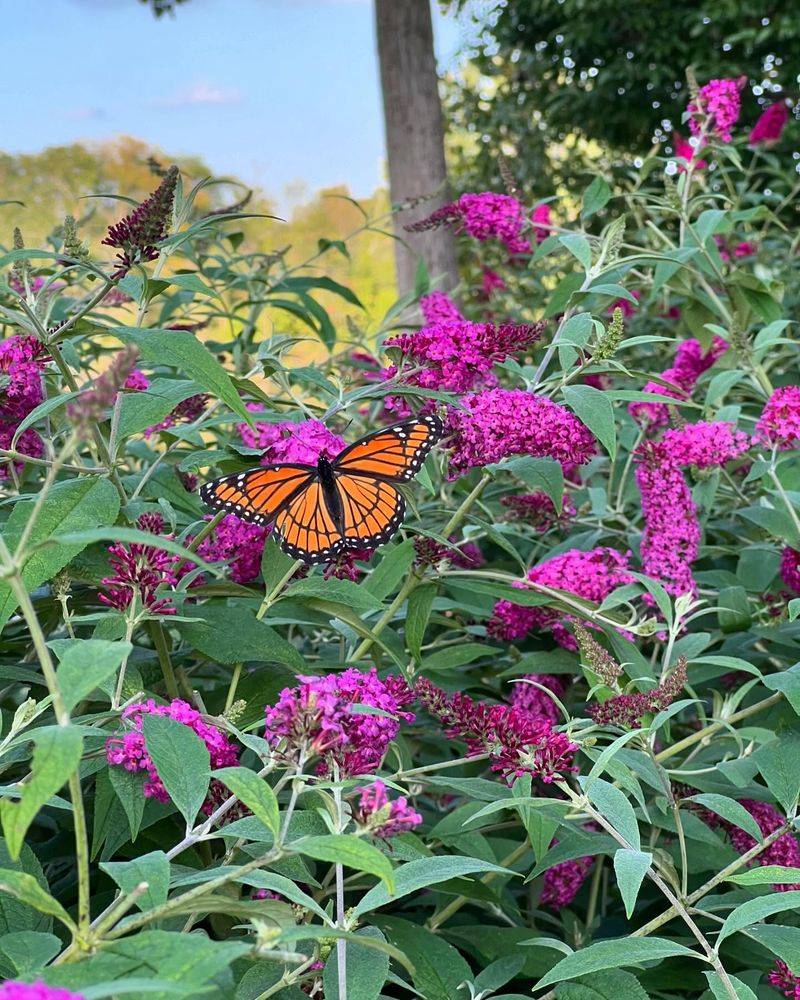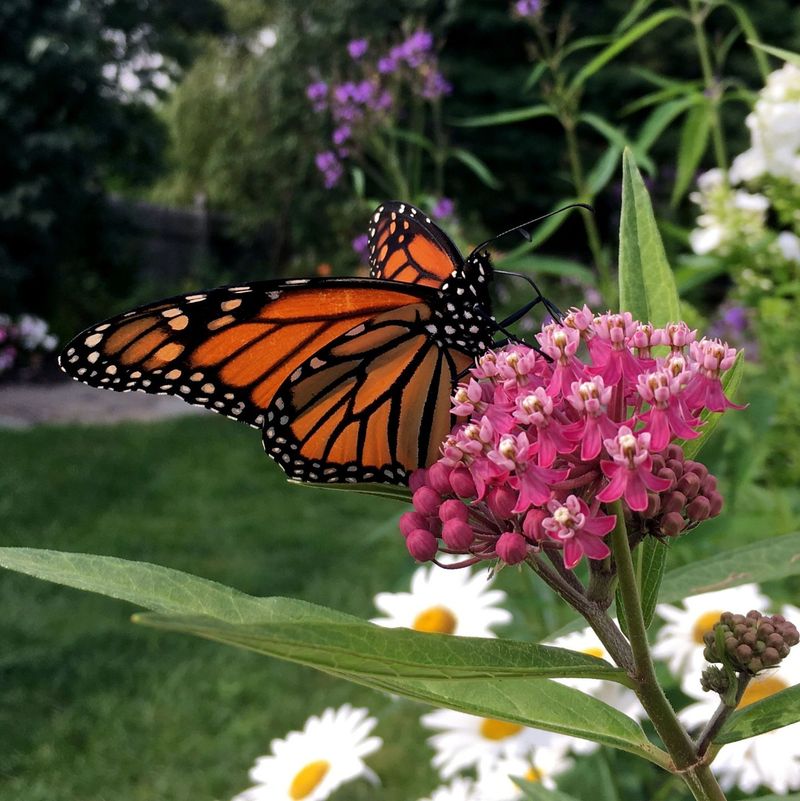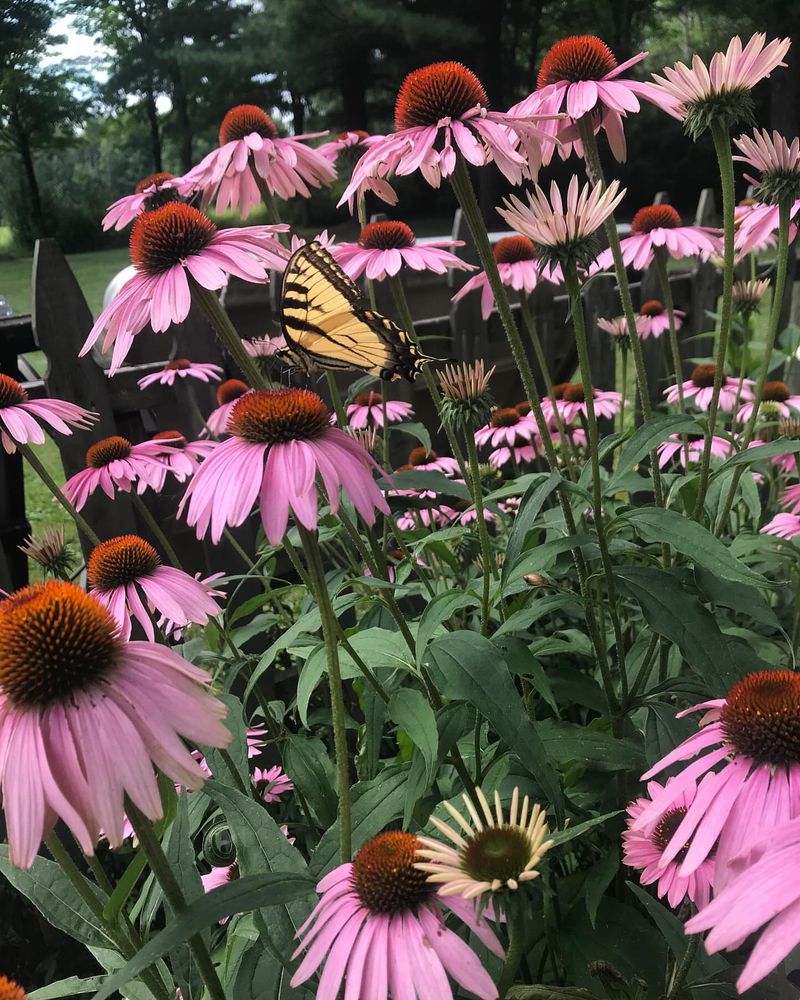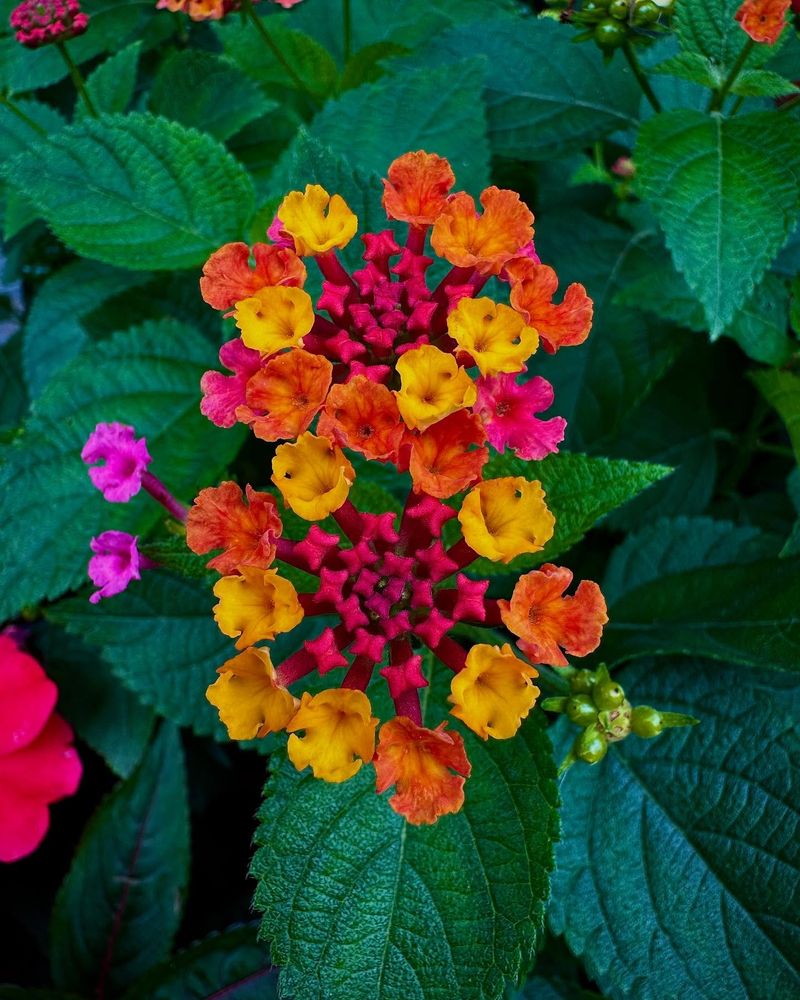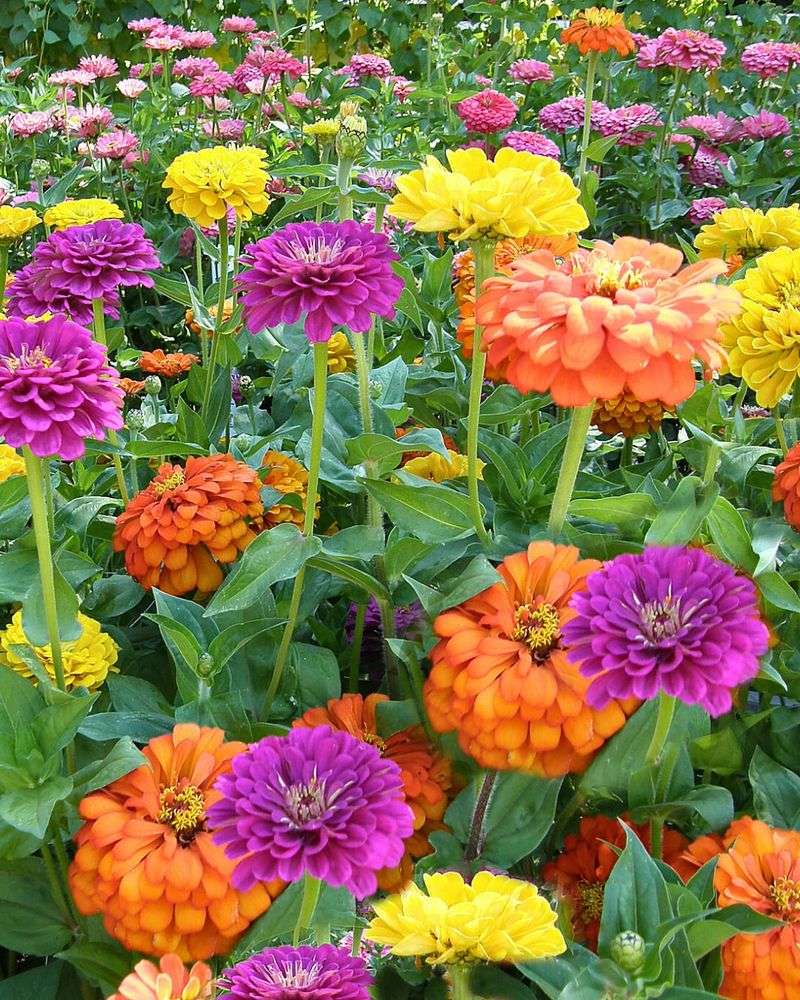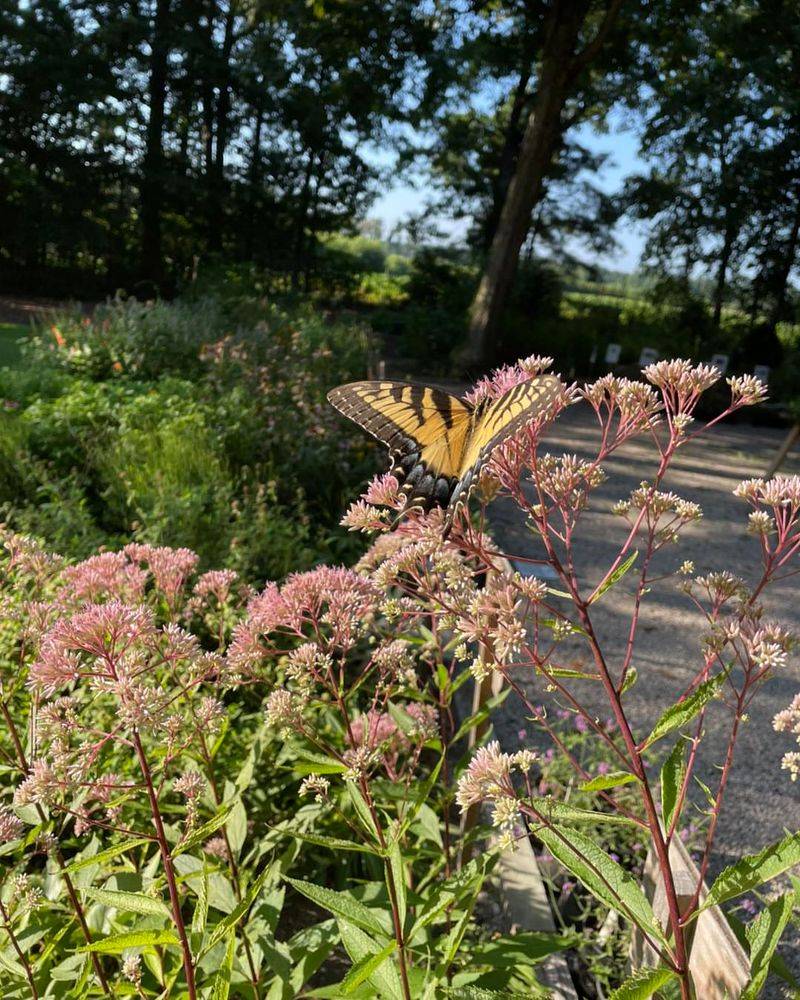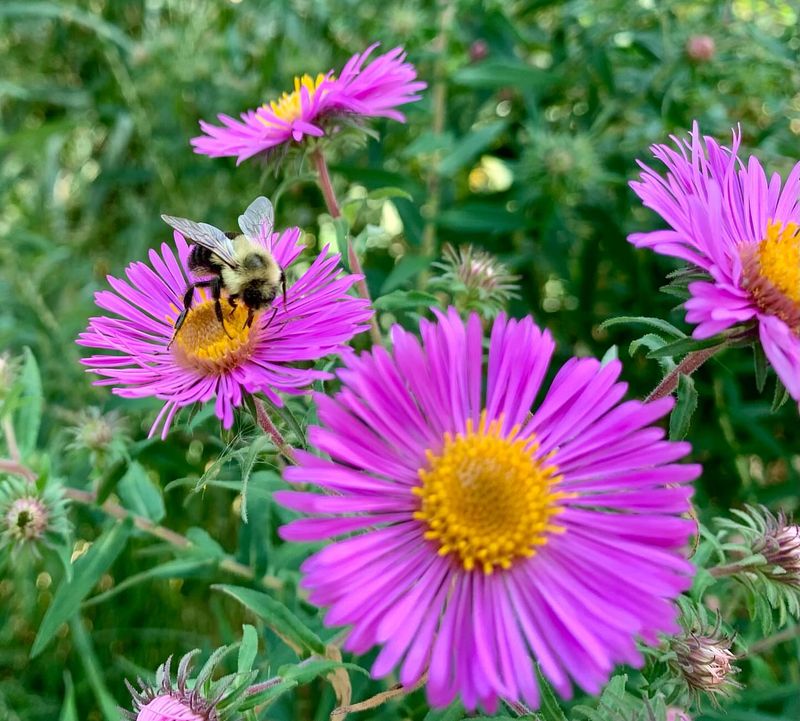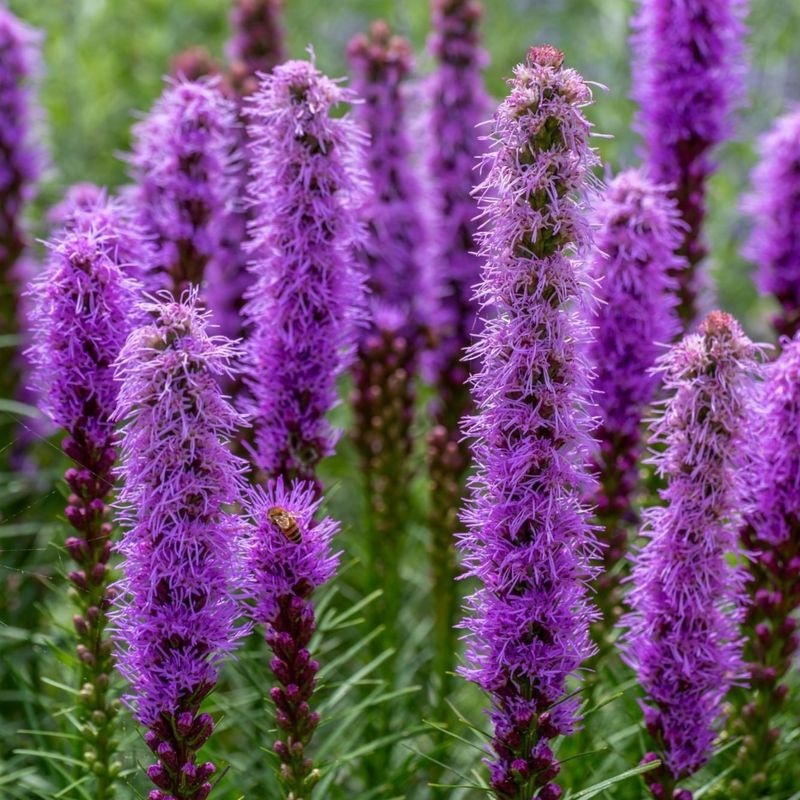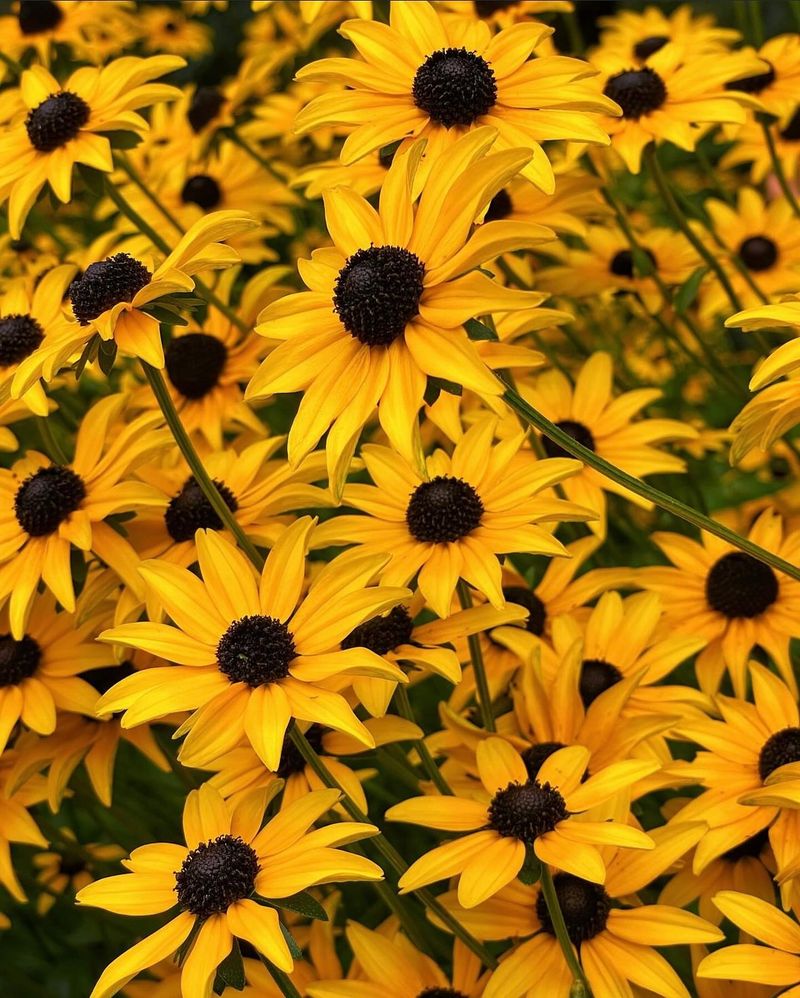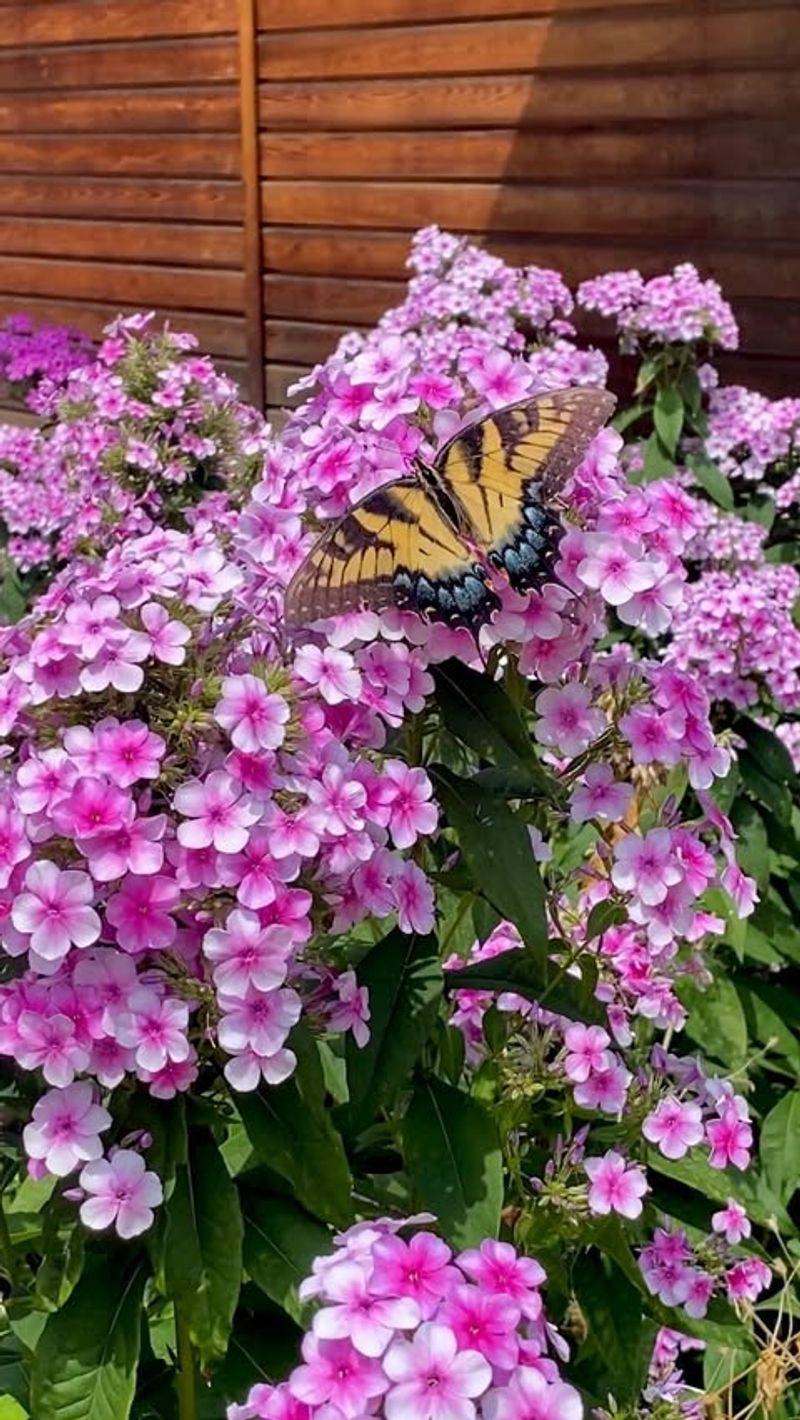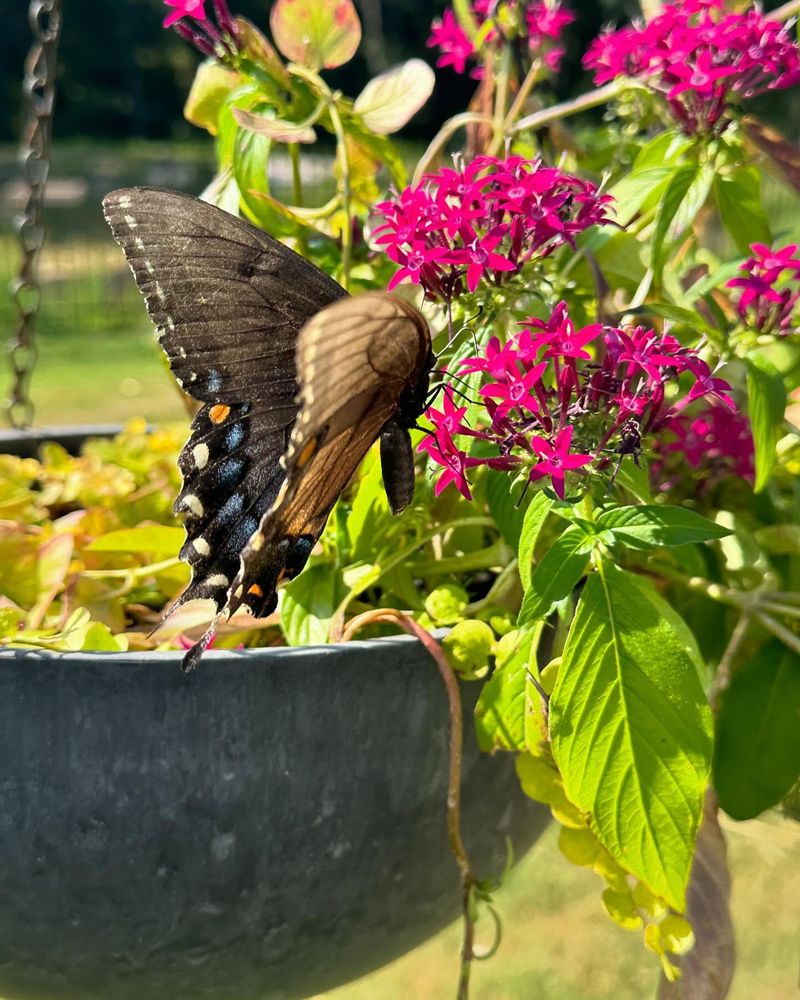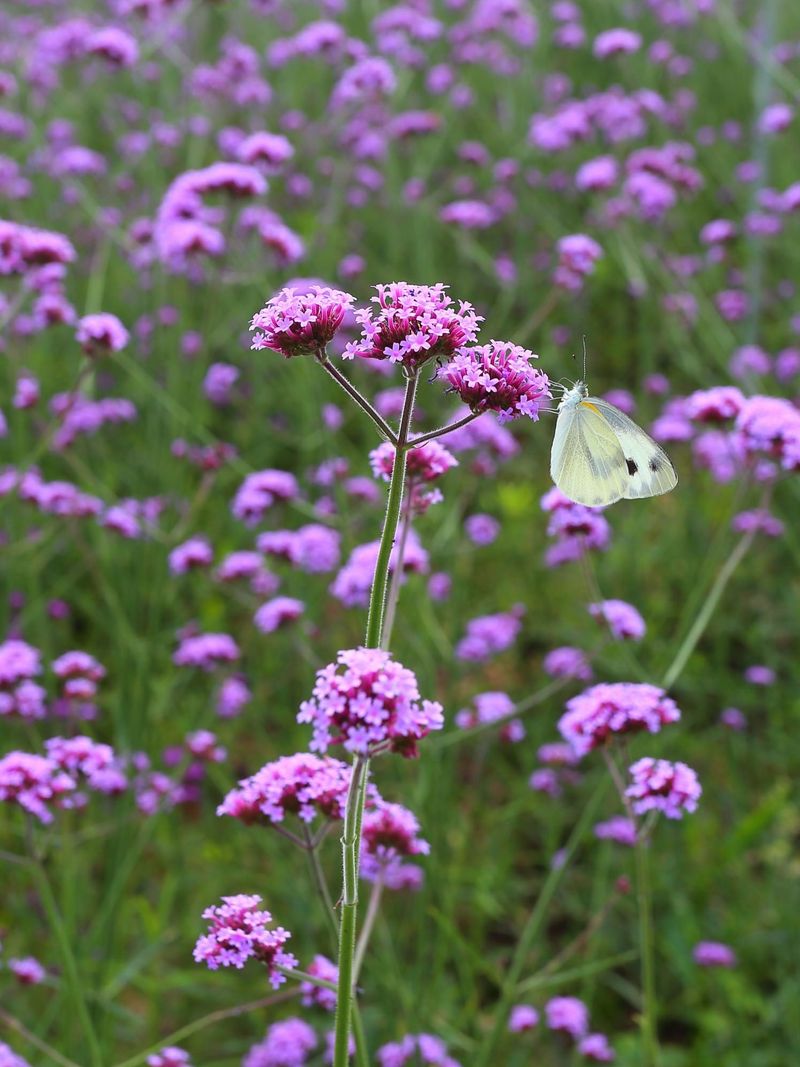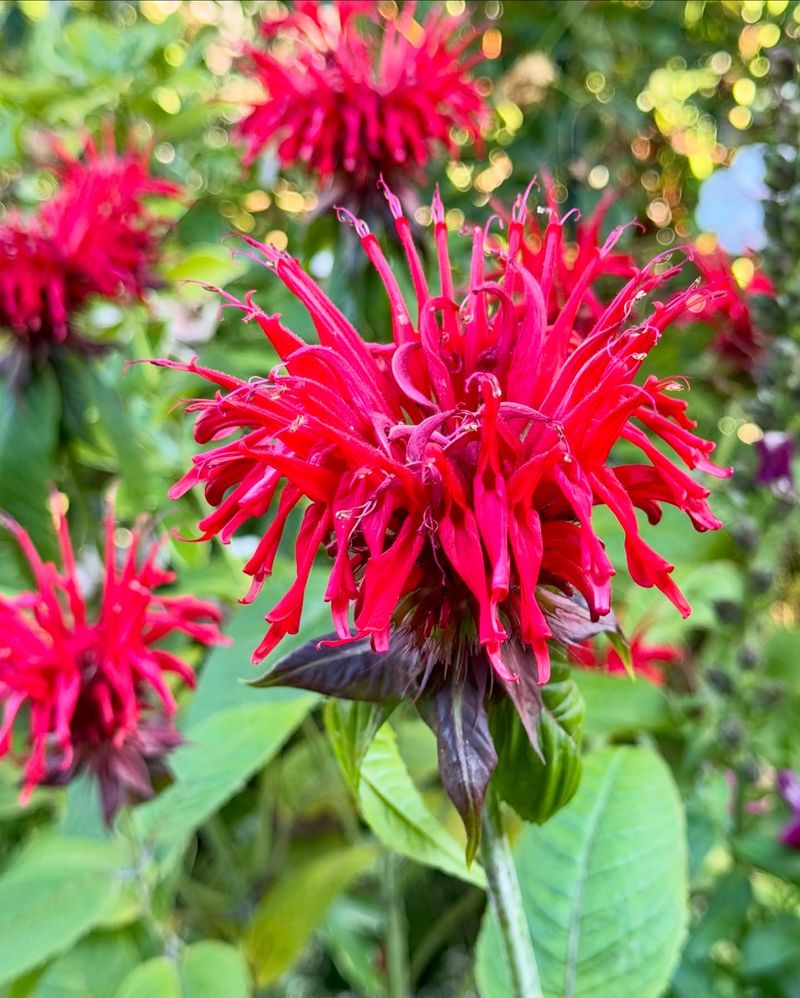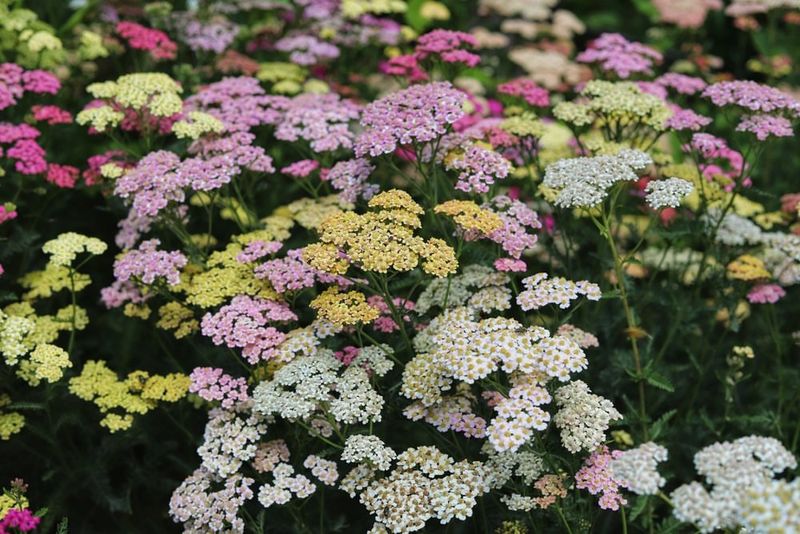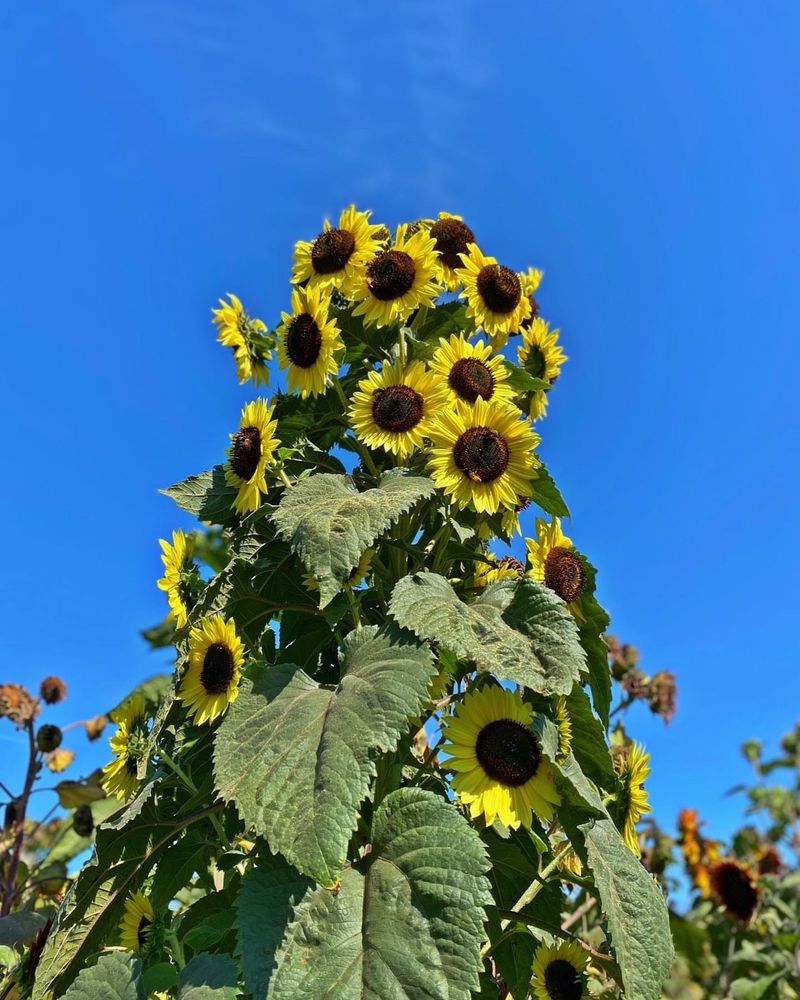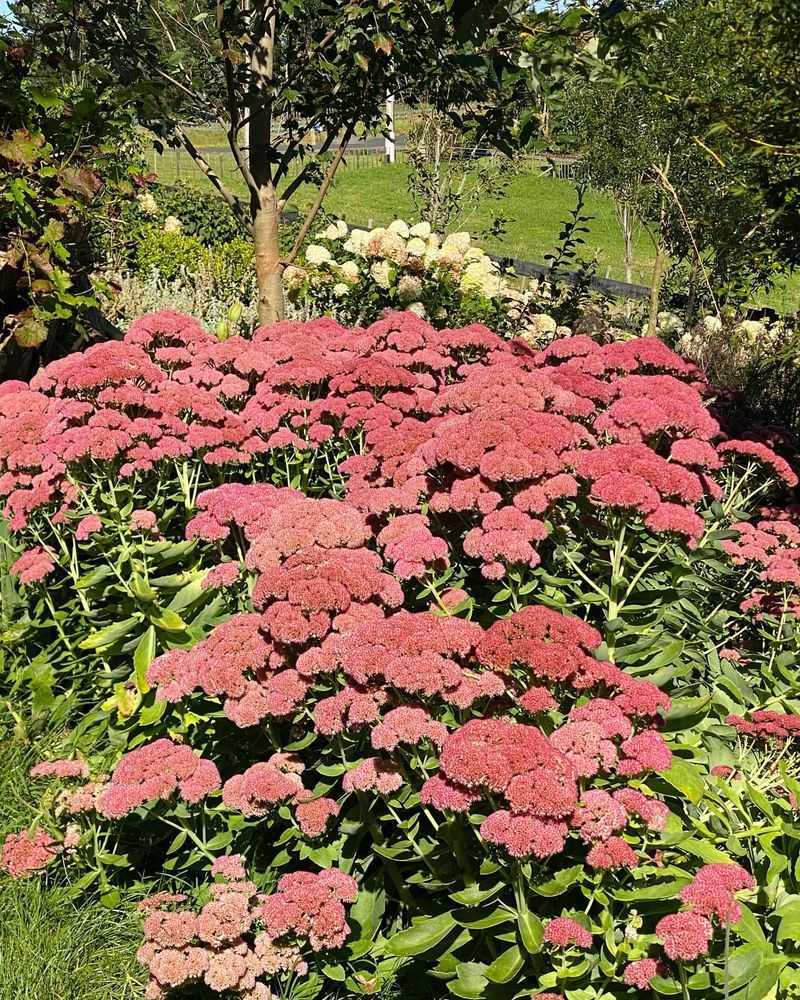If you’ve ever wished your garden felt more alive, these plants are like a magnet for butterflies. I added just a few and suddenly it felt like my yard had its own fluttering fan club.
They’re pretty, low-maintenance, and make everything feel a little more magical. Plus, watching butterflies drift through the flowers never gets old. With the right plants, you don’t just grow a garden—you grow a show.
1. Butterfly Bush
Nothing attracts butterflies quite like this aptly named shrub! The long, cone-shaped flower clusters produce abundant nectar that butterflies simply can’t resist.
Available in purple, pink, or white varieties, these fast-growing plants bloom from summer through fall. They’re drought-tolerant once established and make excellent backdrop plants in sunny spots.
2. Milkweed
The monarch butterfly’s survival depends on this crucial plant. Female monarchs lay eggs exclusively on milkweed because it’s the only food their caterpillars can eat.
Native milkweed varieties support local ecosystems best. The plant produces clusters of star-shaped flowers in pink, orange, or white, making it both functional and ornamental in butterfly gardens.
3. Coneflower
Hardy and reliable, coneflowers offer a perfect landing pad with their distinctive central cones surrounded by colorful petals. Butterflies love to perch on these sturdy blooms while sipping nectar.
Beyond attracting butterflies, these native perennials bloom for months and hold up well in heat and drought. Leave the seedheads standing in fall to feed birds and add winter interest.
4. Lantana
Ever noticed how butterflies seem to flock to these colorful clusters? Lantana’s multi-colored blooms change shades as they age, creating a kaleidoscope effect that’s irresistible to butterflies.
Heat-loving and drought-tolerant, lantana thrives when other plants wilt. The tiny flowers grow in clusters, providing perfect perches for multiple butterflies to feed simultaneously.
5. Zinnia
Looking for an easy annual that butterflies adore? Zinnias grow quickly from seed and produce nectar-rich blooms in every color except blue. Their flat, daisy-like flowers provide perfect landing pads.
Cut zinnias regularly to encourage more blooms throughout summer and fall. The single-flowered varieties attract more butterflies than double forms because the nectar is more accessible.
6. Joe-Pye Weed
Don’t let the name fool you – this native perennial is butterfly royalty! Rising to impressive heights of 5-7 feet, Joe-Pye weed creates majestic purple flower clusters that butterflies can’t resist.
The vanilla-scented blooms appear in late summer when many other plants have finished flowering. Swallowtails and monarchs particularly favor this stately plant for its abundant nectar.
7. Aster
Fall-blooming asters arrive just in time to fuel monarch butterflies during their epic migration. The daisy-like flowers come in purples, pinks, and whites, creating a color explosion when many plants are fading.
Native aster varieties support specialized pollinators that depend on them. Plant these perennials in groups for maximum butterfly appeal and a spectacular autumn display.
8. Blazing Star
Imagine tall purple spikes covered with butterflies – that’s the magic of blazing star! These native prairie plants produce dramatic flower stalks that act like butterfly magnets in mid to late summer.
The unique blooming pattern starts at the top and works downward, extending the nectar season. Drought-tolerant once established, blazing stars thrive in sunny spots with well-drained soil.
9. Black-Eyed Susan
Cheerful and carefree, these golden daisies brighten gardens while serving up nectar to grateful butterflies. Their flat, open flowers provide easy access for various butterfly species to feed.
As native wildflowers, they’re incredibly resilient and bloom prolifically for weeks. The distinctive dark centers contrast beautifully with the bright petals, creating a classic summer look that butterflies find irresistible.
10. Fennel
Feathery and fragrant, fennel pulls double-duty in butterfly gardens. The yellow flower umbels feed adult butterflies, while the ferny foliage serves as food for swallowtail caterpillars.
Watch for distinctive black and green striped caterpillars munching on the leaves – it’s a sign your butterfly habitat is working! The plant’s anise scent and architectural form add sensory appeal to garden borders.
11. Phlox
Sweet fragrance and nectar-rich blooms make garden phlox a butterfly favorite. The clustered flowers come in pinks, purples, whites, and bicolors, adding cottage garden charm from mid-summer through fall.
Butterflies particularly love the tall garden varieties that stand 3-4 feet high. For best results, choose mildew-resistant cultivars and provide good air circulation around plants.
12. Pentas
Star-shaped flowers in clusters give pentas their nickname “Egyptian Star Cluster.” The flat-topped flower bunches provide perfect platforms for butterflies to land and feed.
Available in reds, pinks, purples, and white, these non-stop bloomers thrive in summer heat. In warm climates, they’re perennial, while northern gardeners enjoy them as annuals in containers or beds.
13. Verbena
Low-growing and long-blooming, verbena creates carpets of color that butterflies can’t resist. The tight clusters of small flowers offer abundant nectar from spring through frost.
Heat and drought tolerance make verbena incredibly reliable even in challenging conditions. The spreading varieties look spectacular spilling over walls or containers, creating cascades of butterfly-friendly blooms.
14. Bee Balm
Whimsical flower heads that resemble exploding fireworks make bee balm a garden standout. Despite its name, this native plant attracts butterflies just as readily as bees.
Hummingbirds also flock to the tubular flowers arranged in shaggy heads. Available in reds, pinks, and purples, bee balm thrives in moist soil and partial shade, adding diversity to butterfly garden conditions.
15. Yarrow
Flat-topped flower clusters provide perfect landing pads for butterflies seeking nectar. The feathery foliage adds textural contrast in garden beds, while the flowers come in yellows, pinks, reds, and whites.
Incredibly drought-tolerant once established, yarrow thrives in poor soil where many plants struggle. The long-lasting blooms also make excellent cut flowers, attracting butterflies right up to your doorstep.
16. Sunflower
Towering garden giants do more than just track the sun! Sunflowers attract numerous butterfly species with their abundant pollen and nectar, especially when grown in groups.
Choose branching varieties that produce multiple blooms rather than single-stemmed types. The smaller, multi-branched sunflowers offer more feeding opportunities and longer bloom periods for your butterfly visitors.
17. Sedum
Late-season nectar becomes crucial as butterflies prepare for migration or hibernation. Sedum’s flat-topped flower clusters appear in late summer and fall, providing essential fuel when many plants have finished blooming.
The succulent foliage stays attractive all season, while the flowers transform from pale green to pink and finally rusty red. Plant sedums in full sun and well-drained soil for best performance.

